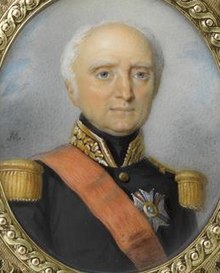You can help expand this article with text translated from the corresponding article in French. Click [show] for important translation instructions.
|
This article includes a list of general references, but it lacks sufficient corresponding inline citations. (April 2009) |
The Treaty of Tafna was signed by both Emir Abdelkader and General Thomas Robert Bugeaud on 30 May 1837. This agreement was developed after French imperial forces sustained heavy losses and military reversals in Algeria. The terms of the treaty entailed Emir Abdelkader recognizing French imperial sovereignty in Africa. However, the price France had to pay for acquiring recognition entailed its secession of approximately two thirds of Algeria to Abdelkader (the provinces of Oran, Koléa, Médéa, Tlemcen and Algiers).[1] As a result of the treaty, France was able to maintain only a few ports.


The stipulations of the treaty indicated that the French interpreted the territory of Emir Abdelkader as sovereign, thereby recognising an Algerian state.[2] Abdelkader used the treaty to consolidate his power over tribes throughout the interior, establishing new cities far from French control. He worked to motivate the population under French control to resist by peaceful and military means. Seeking to face the French against, he laid claim under the treaty to territory that included the main route between Algiers and Constantine. When French troops contested the claim in late 1839 by marching through a mountain defile known as the Iron Gates, he claimed a breach of the treaty and renewed calls for jihad.
See also
editReferences
edit- ^ An Account of Algeria, or the French Provinces in Africa, p. 116. The subsequent progress of the French army is well known: after meeting with many reverses, and sustaining with great bravery very severe losses, it obtained, by the treaty of Tafna, executed with Abdelkader on 30th May 1837, an acknowledgment on his part of the sovereignty of France in Africa, with a definition of the limits of its dominion in the provinces of Oran and Algiers.
- ^ Naylor, Phillip C. Historical dictionary of Algeria. Scarecrow Press. 2006.
Sources
edit- An Account of Algeria, or the French Provinces in Africa. Journal of the Statistical Society of London, Vol. 2, No. 2, pp. 115 – 126 (March 1839).